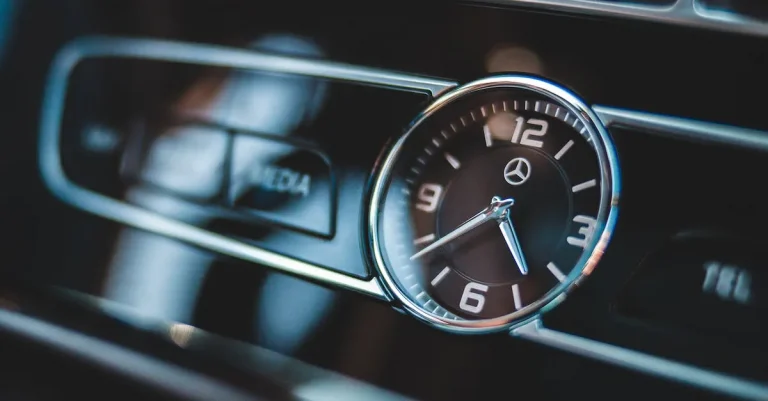How To Change Your License Plate In California
Getting a new license plate in California is a straightforward process handled by the DMV. You may want to change your plate for personal reasons, because it’s damaged, or due to buying a new car. No matter why, following the proper steps ensures you complete the change legally and efficiently. If you’re short on time, here’s a quick answer to your question: To change your license plate in California, complete the Notice of Acquisition form, pay the fee, and visit a DMV field office to submit it and get new plates.
In this comprehensive guide, we’ll cover everything you need to know about changing license plates in California. We’ll outline scenarios when you need new plates, the required forms and fees, how to make an appointment, transferring your registration, and displaying your new number.
When You Need to Change Your License Plate
There are several situations in which you may need to change your license plate in California. Whether you have bought a new car, your plate is damaged or lost, or you simply have a personal preference for a new number, it is important to understand the process and requirements for obtaining a new license plate.
Bought a New Car
If you have recently purchased a new car in California, you will need to change your license plate. This is because license plates are registered to the vehicle, not the owner. When you buy a new car, the license plate from your old vehicle cannot be transferred.
Instead, you will need to obtain a new license plate for your new car. This ensures that the license plate number is unique to your vehicle and helps with identification and registration purposes.
Plate is Damaged or Lost
If your license plate has been damaged or lost, it is important to replace it as soon as possible. Driving with a damaged or missing license plate is illegal and can result in fines or other penalties.
To replace a damaged or lost license plate in California, you will need to visit your local Department of Motor Vehicles (DMV) office and provide the necessary documentation and payment. The DMV will issue you a new license plate with the same number as your previous one.
Personal Preference for New Number
If you have a personal preference for a new license plate number, California offers various specialty license plates that you can choose from. These specialty plates often feature unique designs or support a particular cause or organization.
To obtain a specialty license plate, you will need to visit the California DMV website and follow the instructions for ordering a personalized or specialty plate. Keep in mind that there may be additional fees associated with obtaining a specialty plate.
Forms and Fees to Change Your Plate
Notice of Acquisition Form REG 256
When changing your license plate in California, one of the first steps you need to take is to fill out the Notice of Acquisition Form REG 256. This form is required to notify the Department of Motor Vehicles (DMV) that you have acquired a new vehicle.
It is important to complete this form accurately and submit it within the required timeframe to avoid any potential penalties or issues with your vehicle registration. You can find the form on the official website of the California DMV or visit your local DMV office to obtain a physical copy.
Personalized Plates Have Added Fees
If you are interested in getting personalized license plates for your vehicle, it is important to note that there are additional fees associated with this option. Personalized plates allow you to customize your license plate number with a combination of letters and numbers that have meaning to you.
However, this customization comes at a cost. The fees for personalized plates vary depending on the type of plate you choose and the duration of its validity. It’s a great way to add a personal touch to your vehicle, but it’s essential to consider the added expense when making your decision.
Credit Card or Check Payment
When it comes to paying the fees for changing your license plate in California, you have two main options: credit card or check payment. The DMV accepts most major credit cards, including Visa, Mastercard, and American Express.
If you prefer to pay by check, make sure it is made payable to the “Department of Motor Vehicles” and includes your driver’s license number, vehicle identification number (VIN), and phone number on the memo line of the check.
It’s important to note that cash is not accepted at the DMV for any transactions, including license plate changes.
For more information on changing your license plate in California, you can visit the official website of the California DMV. They provide detailed instructions and resources to help you navigate the process smoothly.
Making a DMV Appointment
When it comes to changing your license plate in California, the first step is to make a DMV appointment. This will save you time and ensure that you have all the necessary documents and information ready. Fortunately, the California DMV offers several options for scheduling your appointment.
Schedule Online
Scheduling your DMV appointment online is a convenient and efficient way to secure your spot. Simply visit the official California DMV website and follow the instructions to schedule your appointment. You’ll be able to select a date and time that works best for you, making it easy to fit into your busy schedule.
It’s important to note that the availability of online appointments may vary depending on your location and the type of service you require. However, the online scheduling system is designed to provide you with the earliest available appointment.
Same Day or Walk-in May Be Available
If you need to change your license plate urgently or prefer a more flexible approach, you may have the option of a same-day appointment or walk-in service. Some DMV offices in California offer limited same-day appointments for certain services.
These appointments are typically available on a first-come, first-served basis, so it’s best to arrive early to secure your spot.
Alternatively, you can also try a walk-in appointment. This means that you visit the DMV office without a prior appointment and wait for an available slot. While this option may involve a longer wait time, it can be a good choice if you have a flexible schedule and are willing to wait for your turn.
What to Bring to Your Appointment
Before heading to your DMV appointment, make sure you have all the necessary documents and information. This will help ensure a smooth and efficient process. Here are some items you should bring:
- Your current vehicle registration
- Proof of identity, such as a valid driver’s license or passport
- Proof of residency, such as a utility bill or rental agreement
- Any required forms or paperwork provided by the DMV
- Payment for the license plate replacement fee
It’s always a good idea to double-check the specific requirements and documents needed for your license plate change on the official California DMV website. This will help ensure that you have everything you need before your appointment, saving you time and avoiding any potential delays.
Remember, making a DMV appointment is the first step in changing your license plate in California. By following the guidelines and preparing the necessary documents, you can streamline the process and get your new license plate in no time.
Transferring Your Registration
When it comes to changing your license plate in California, one of the important steps is transferring your registration. This ensures that the new license plate is properly registered under your name and that you are legally allowed to operate the vehicle.
Here are a couple of key subheadings to guide you through the process:
Getting New Stickers
Once you have obtained your new license plate, you will need to get new stickers for it. Stickers are important as they indicate that your vehicle’s registration is up to date. To get new stickers, you can visit a local DMV office or use their online services.
The California DMV website provides step-by-step instructions on how to apply for new stickers online. It’s a convenient option that saves you time and effort. Just make sure you have all the necessary documents, such as your current registration card and proof of insurance.
Selling or Gifting Your Car
If you’re planning to sell or gift your car, it’s crucial to transfer the registration properly. This ensures that the new owner is legally responsible for the vehicle and prevents any potential liability issues for you.
To transfer the registration, you will need to complete the necessary paperwork, including the Notice of Transfer and Release of Liability form. This form notifies the DMV that you are no longer the legal owner of the vehicle.
It’s important to submit this form as soon as possible to avoid any complications or penalties.
Additionally, if you are selling your car, it’s a good idea to provide the buyer with a bill of sale. This document serves as proof of the transaction and protects both parties involved. It should include important details such as the vehicle’s make, model, year, VIN number, sale price, and signatures of both the buyer and the seller.
For more detailed information and specific requirements regarding transferring your registration in California, it’s always best to consult the official California DMV website. They have a wealth of resources and guides to help you navigate the process smoothly.
Displaying Your New License Plate
Once you have received your new license plate in California, it is important to properly display it on your vehicle. This not only ensures that you are in compliance with state laws, but it also helps to easily identify your vehicle.
Here are some key steps to follow when displaying your new license plate:
Remove Old Plates
The first step in displaying your new license plate is to remove the old plates from your vehicle. To do this, you will need a screwdriver or a wrench, depending on the type of fasteners used. Make sure to keep the old plates in a safe place, as you may need to return them to the Department of Motor Vehicles (DMV) if required.
Mount New Plates Properly
Once the old plates have been removed, it’s time to mount the new plates properly. Check the instructions provided with your new license plate to ensure you are mounting it correctly. Typically, you will need to use the same screw holes as the old plates.
Use the appropriate tools to securely fasten the new plates to your vehicle.
Avoid Obstructions
When mounting your new license plate, it is important to ensure that it is clearly visible and not obstructed in any way. According to California law, your license plate must be mounted in a position where it is easily readable and not covered by any part of the vehicle, such as the bumper or a bike rack.
Make sure that there are no accessories, such as license plate frames, that obstruct the visibility of your plate.
For more detailed information on displaying your new license plate in California, you can visit the official website of the California DMV here.
Conclusion
Changing your license plates in California is a fast and easy errand. By completing the proper DMV paperwork, paying fees, and following plate display laws, you can get new plates when required or desired. Being informed on the process ahead of time ensures you can take care of this essential task quickly.
With new license plates, you can update your car’s look, properly register a new vehicle, or simply refresh your expired registration stickers. As long as your plates are legal and visible, you’ll be ready to cruise California’s roads and highways safely and in style.








